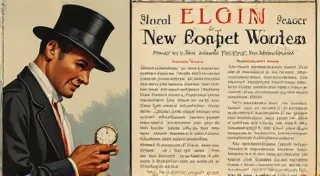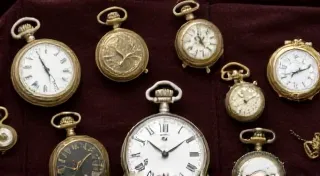The First Pocket Watches: Nuremberg and the Rise of Portable Time
Before the wristwatch became ubiquitous, portable timekeeping was a dream for many. The story of the first pocket watches is intimately tied to the vibrant city of Nuremberg, Germany, in the 16th century. This period saw a confluence of technological innovation, burgeoning trade, and a growing desire for personal timekeeping devices – setting the stage for the birth of what we now recognize as pocket watches.
The Precursors: From Clock to Portable Time
To understand the emergence of the pocket watch, it's essential to appreciate the context of the time. Large, public clocks had become increasingly common, but personal timekeeping was limited to table clocks, which were far from portable. The move towards creating smaller, more personal timepieces was driven by several factors: the rise of merchants needing to manage their time efficiently, the increasing desire among the wealthy to display status and sophistication, and the advancements in horological techniques.
Early attempts at miniaturization were not always successful. The complexities of clockmaking – the precision required for gears, springs, and escapements – presented significant challenges when scaled down. However, a few skilled craftsmen in Nuremberg began to experiment, laying the groundwork for the first true pocket watches.

Key Figures in the Nuremberg Renaissance of Time
While pinpointing the *very first* pocket watch is difficult (as with many historical inventions, multiple individuals contributed), several names stand out in the early history of portable timekeeping in Nuremberg:
- Peter Henlein: Often cited as the 'father' of the pocket watch, Henlein was a locksmith and clockmaker in Nuremberg from around 1500. He is credited with creating small, spring-powered timekeeping devices in the 1520s. These early watches were often oblong or oval in shape, and their accuracy was, by today's standards, quite limited. They weren't refined chronometers; these were status symbols and novelties.
- Caspar Enderlein: Another prominent Nuremberg clockmaker, Enderlein, was known for his innovative designs and improvements to Henlein's early creations. He worked in close proximity to Henlein and contributed to the evolution of portable timepieces.
- Johann Lösel: Lösel, alongside other Nuremberg craftsmen, also played a significant role in developing and refining the mechanisms of the early pocket watches.
These individuals didn't work in isolation. Nuremberg had a thriving community of skilled artisans, creating an environment conducive to innovation and experimentation.
Early Designs and Mechanisms
The first pocket watches were quite different from what we expect today. They were often adorned with elaborate engravings and decorative elements, reflecting the aesthetic sensibilities of the time. The cases were often made from brass, silver, or even precious metals, indicating the wealth of their owners.
The mechanisms themselves were relatively simple, relying on a mainspring to power a fusee and verge escapement. Accuracy was a major issue – early pocket watches might gain or lose several minutes a day. However, the novelty and portability of these devices more than compensated for their limitations. They were status symbols, allowing individuals to carry time with them, demonstrating wealth and sophistication.

The Spread of Pocket Watches Beyond Nuremberg
The innovations originating in Nuremberg quickly spread beyond the city. Craftsmen from other parts of Europe, attracted by the prestige and opportunity, traveled to Nuremberg to learn the art of pocket watch making. Within a few decades, pocket watches became increasingly common across Europe, transforming personal timekeeping.
The Legacy of Nuremberg's Timekeepers
The legacy of the Nuremberg clockmakers extends far beyond the invention of the pocket watch. They demonstrated the power of ingenuity, craftsmanship, and a desire to solve a practical need. Their contributions laid the foundation for the intricate and precise timekeeping we enjoy today. Collecting early Nuremberg pocket watches provides a fascinating window into a pivotal moment in the history of technology and a captivating glimpse into the lives of those who pioneered portable time.






